Show All 6 photos
Inside the tech keeping you on the road.
Inside the tech keeping you on the road.
It’s annoying and potentially dangerous to get a flat tire, and while tires have improved immensely over the years, it’s still possible to pick up the nail that will ruin your day. So what’s a motorist to do?
There are some options, and the best-known are run-flat tires and self-sealing tires. Naturally, each has its good and bad points, and you should know the score before you plunk down your cash.
The idea behind both is that you can continue driving even when your tire has been punctured, but they’re completely different in how they do this. Run-flat tires will lose some or all of their air if they’re punctured, but they still support the vehicle. Self-sealing tires plug up the hole after a puncture, so the air inside doesn’t escape.
Most run-flat tires use one of two technologies. Self-supporting run-flats have a very stiff, reinforced sidewall. If the tire loses air, the sidewall stays on the rim and holds up the vehicle. This is the most common type of run-flat.
Support ring run-flats have a thick ring, made of hard rubber or other firm material, which encircles the inside of the rim. If the tire loses air, the ring supports the vehicle as you drive.
Self-sealing tires use a different approach. They contain an inner layer of sealant material along the tread. If a nail or other foreign object punctures the tire, the sealant layer closes the hole to prevent the air from escaping, and the tire stays inflated.
Both run-flats and self-sealers are all about the tread. A cut in the sidewall will compromise a self-supporting run-flat tire’s ability to hold up the vehicle. Self-sealing tires don’t have a sealant layer in the sidewall, and they can only handle punctures up to a certain size in the tread.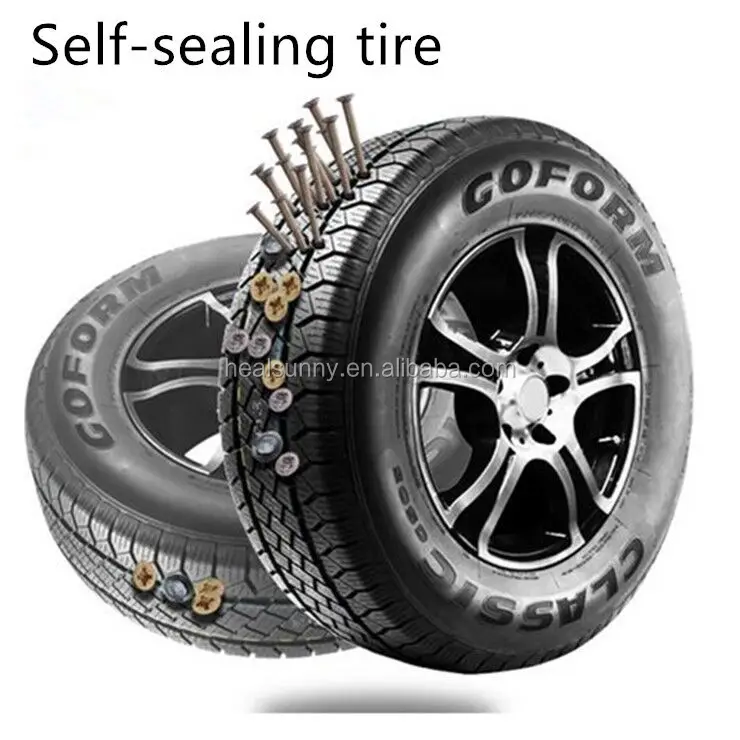
 Rather than dissipate energy along rough roads, it transmits it into the cabin. While run-flats are much better today than when they first came out in the 1980s, they can still produce a very firm, harsh ride.
Rather than dissipate energy along rough roads, it transmits it into the cabin. While run-flats are much better today than when they first came out in the 1980s, they can still produce a very firm, harsh ride. Manufacturers recommend that before fixing a puncture, the technician should dismount the tire and inspect the interior to be sure it can be saved. If it can’t, that brings us to the next point…
Manufacturers recommend that before fixing a puncture, the technician should dismount the tire and inspect the interior to be sure it can be saved. If it can’t, that brings us to the next point…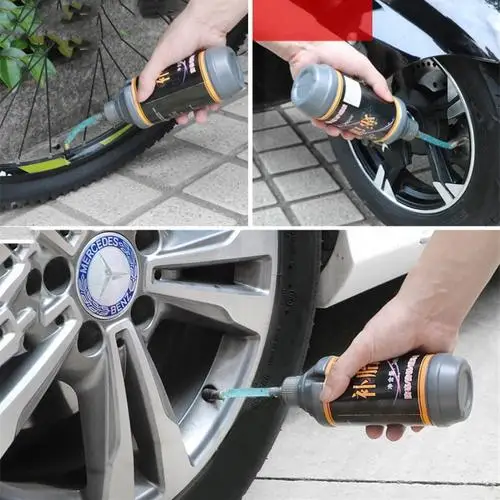 The sealant layer is not for deep cuts across the tread, or cuts or punctures in the sidewall.
The sealant layer is not for deep cuts across the tread, or cuts or punctures in the sidewall.Even if your car doesn’t have run-flat tires, you may still open the trunk and find there’s no spare. In that effort to shed weight, some manufacturers give you conventional tires, along with a can of sealant that you spritz into the tire to plug up the hole, and an air pump that you plug into the car’s power outlet and use to inflate the tire.
When you take the tire in for repair, be sure to tell the technician that the tire’s been treated with goop. Sealant has a shelf life, so periodically check the date on the can, and if necessary, replace it with a new one. Tires never pick a good place or time to go flat, and you’ll thank yourself that you did.
Sealant has a shelf life, so periodically check the date on the can, and if necessary, replace it with a new one. Tires never pick a good place or time to go flat, and you’ll thank yourself that you did.
Jil McIntosh
See more
Jil McIntosh writes about new cars, antique and classic cars, and the automotive industry. A member of the Automobile Journalists Association of Canada (AJAC), she has won several awards for her writing, including Journalist of the Year in 2016. In addition to testing new vehicles, she owns two from the 1940s.
One challenging issue all drivers face at one time or another is a flat tire. Flat tires can put a damper on anyone’s day, and when you realize they can happen anytime – plus the fact you have to get your car to the repair shop, or try to install the temporary tire, it can become quite a source of stress.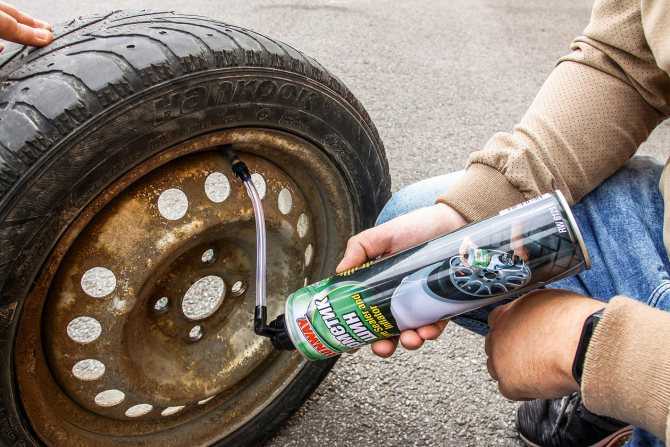 It’s good to know there’s a type of tire you can buy and install on your vehicle that drastically reduces the chance of a flat tire ruining your day: the self-sealing tire.
It’s good to know there’s a type of tire you can buy and install on your vehicle that drastically reduces the chance of a flat tire ruining your day: the self-sealing tire.
If you are wondering what exactly a self-sealing tire is, this technology is based on the same one behind run-flat tires. How it works is that inside the tire there is a very sticky, thick rubbery liquid that moves quickly to seal any puncture 5mm or less in your tire tread the moment it happens. When the sticky sealant fills the punctured tread area, you can continue to drive as you normally do, without any noticeable loss of tire pressure or control, until you are able to reach your destination and have the tire repaired.
The introduction of self-sealing tires has ensured that no matter where you are travelling, if your tire is punctured by a nail, screw or piece of glass – or another sharp object – you will be able to continue your journey safely until you can reach your destination.
Many of the popular tire brands have a range of self-sealing tires available. Here, the team at blackcircles.ca gives a brief description of some of the self-sealing tires available from some of the larger manufacturers.
The ContiSeal tire from tire manufacturer Continental is a great option if you are looking to buy self-sealing tires online at the best price. The ContiSeal is guaranteed to seal 80 per cent of all tire punctures, which gives drivers excellent peace of mind. With the proprietary inner sealant that is present in the ContiSeal self-sealing tire, any small puncture to the tire tread under 5 mm will self-seal automatically, and you will be able to complete your journey safely.
see the product
The Goodyear DuraSeal self-sealing tire is another great choice. The sealant inside this tire can patch up a one-quarter inch diameter puncture and be relied upon to seal multiple punctures of this size, if necessary. How it works is this, if a nail punctures your tire, then the compound – called DuraSeal – inside the tire immediately surrounds and seals the puncture so you can safely keep driving.
How it works is this, if a nail punctures your tire, then the compound – called DuraSeal – inside the tire immediately surrounds and seals the puncture so you can safely keep driving.
see the product
Michelin SelfSeal tires have been designed to protect the tire surface from common, everyday objects that are most likely to cause flat tires, such as nails and screws. The inner technology that seals tires inside the Michelin line of self-sealing tires can repair punctures up to 6 mm in diameter. The self-sealant inside this tire is also made of a natural rubber sealant which is claimed to be more environmentally friendly than other self-sealing compounds.
see the product
The Pirelli self-sealing tire uses technology called Seal Inside, and promises that your vehicle will keep running without losing air pressure in 85 per cent of cases where the tire has been punctured. Like most self-sealing tires, this Pirelli also does not require any special rims and can be monitored by most tire pressure monitoring systems that are installed on today’s modern cars.
Like most self-sealing tires, this Pirelli also does not require any special rims and can be monitored by most tire pressure monitoring systems that are installed on today’s modern cars.
see the product
Hankook also offers a self-sealing tire, and this tire, introduced in 2015, features proprietary technology from this international tire manufacturer that ensures tires in this range can self-seal from the most common punctures on the road, like nails and screws. With Hankook’s self-sealing technology, you are assured you can get to your destination safely, and with the same regular performance you expect from these tires.
see the product
Of course, there are pros and cons surrounding the use of self-sealing tires. Like all consumers, you likely try to gather as much information as you can before you make a purchase. If you are considering buying self-sealing tires for your vehicle, then here is a list of pros and cons to consider.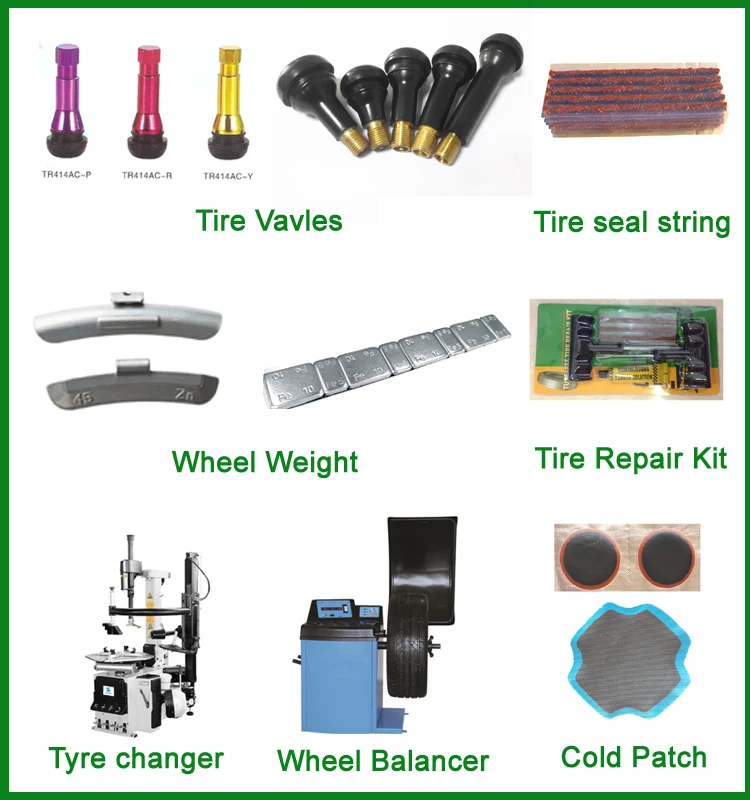
If you are in the market for tires and are interested in buying self-sealing tires for your vehicle, then it’s always good to do some comparison shopping on the different brands first. At blackcircles.ca, we are proud to offer some of the best brands of self-sealing tires on the market, and at the best prices in Canada. Feel free to browse our website, or, if you have specific questions, then simply call us, send us an email or use our handy online chat function, and a member of our friendly and experienced tire sales team will be happy to help you.
At blackcircles.ca, we are proud to offer some of the best brands of self-sealing tires on the market, and at the best prices in Canada. Feel free to browse our website, or, if you have specific questions, then simply call us, send us an email or use our handy online chat function, and a member of our friendly and experienced tire sales team will be happy to help you.
According to statistics, the probability of a tire puncture occurs every 75,000 km on European roads, but on the roads of some countries in Southeast Asia this happens much more often - once every 3,000 km.
The Self-Sealing technology is designed to seal most punctures in the tread area.
Technology Brief: Inside tire tread rubber is coated with a layer of special material that instantly "tightens" small punctures.
tires made with this technology are of standard construction except for an additional under-tread layer coated with a self-sealing puncture sealing compound that is capable of permanently or permanently sealing most punctures from nails, bolts or screws up to 6mm in diameter ( 85% of all punctures). Air leakage is prevented as soon as a puncture occurs, so that the tire either recovers completely by itself or at least loses air very slowly.
Conti Seal™ (Continental)
Tire Technology: Continental ContiSport Contact 3
ContiSeal tires are supplied as original equipment on the VW Passat CC.
Puncture resistance: up to 5 mm
These tires are identical to regular tires in all respects except for the weight, which is increased by a kilogram due to the extra layer.
Seal Inside (S.I.) (Pirelli)
Technology tire: Pirelli Cinturato P7
Within the same range, the performance characteristics (rolling resistance, comfort, noise level, dry and wet performance) of tires with Seal Inside technology do not differ from standard tyres.
Seal Inside technology does not include the use of special discs and TPMS (tire pressure monitoring system) for safe installation on the vehicle; and can be applied to any vehicle depending on the tire size.
K-Seal (Kumho)
In early January 2014, Kumho Tire announced the launch of its first self-sealing model for the South Korean market.
Technology tire: Kumho Majesty Solus
Puncture resistance: up to 5 mm
Approximately 10% heavier than a standard tire without technology.
K-Seal tires do not need to be repaired or replaced immediately after a puncture.
SelfSeal (Michelin)
The main feature is a layer of a special self-tightening polymer several millimeters thick applied on the inside of the tread. Slightly sticky to the touch, yellow polymer (to distinguish it from ordinary rubber during disposal) based on rubber (operating temperature range - from -50 to +80 degrees Celsius) retains its shape, but is able to tighten punctures less than 6 mm in diameter.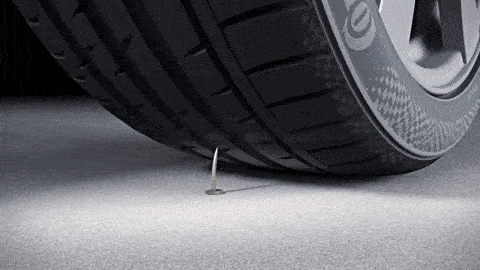
PROS: the comfort and handling of the car do not change. Since there is no pressure drop, these tires do not require tire pressure sensors to fit. Can be fitted to any vehicle, no special wheels or suspension adaptations required. CONS: if the sidewall is damaged, further movement is impossible (although according to statistics, such damage is much less common than punctures protector ). Tightening of punctures with a diameter of more than 6 mm is not guaranteed. WHERE USED: Coming to the replacement market in 2015.
Weight is 500g higher than a regular tire, which will help reduce fuel consumption by 0.4l/100km compared to run-flat tyres.
According to the manufacturer, punctures up to 6 mm are fully tightened and for the entire service life of tire .
Advantages of this technology:
- reduced need to replace tires due to punctures;
- there is no need to carry a spare tire in the trunk, the total amount of space increases and the load on the car decreases;
- no need to have an air pressure sensor (required for RunFlat tires).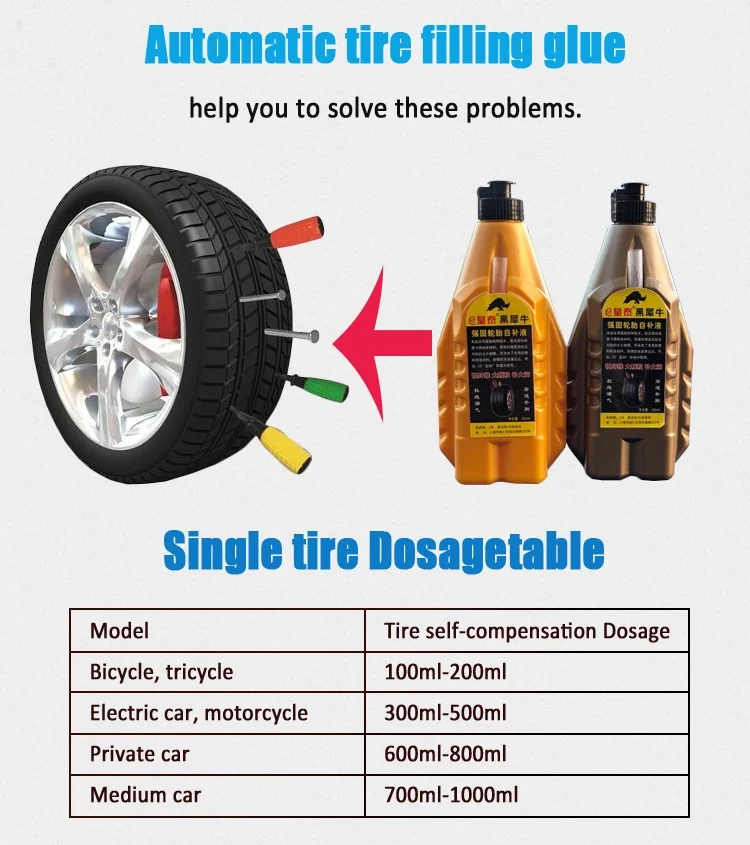
Whether self-sealing tires become mainstream depends on how interesting the technology is to drivers: the higher the popularity of tires, the more affordable they will become for more and more categories of car enthusiasts.
Both car designers and drivers have long dreamed of self-repairing tires. The first solutions of this type were presented by the military, but for some time they have also been found on the civilian market. Examples include Seal Inside or ContiSeal tires made by well-known brands such as Continental, Michelin or Pirelli.
What are self-amalgamating splints for?
The difference between the solutions used by the military and those on the civilian market is primarily due to the reasons why they are introduced at all. The tires of military vehicles are subject to countless damage that can immobilize the vehicle and thus pose a threat to people on the move.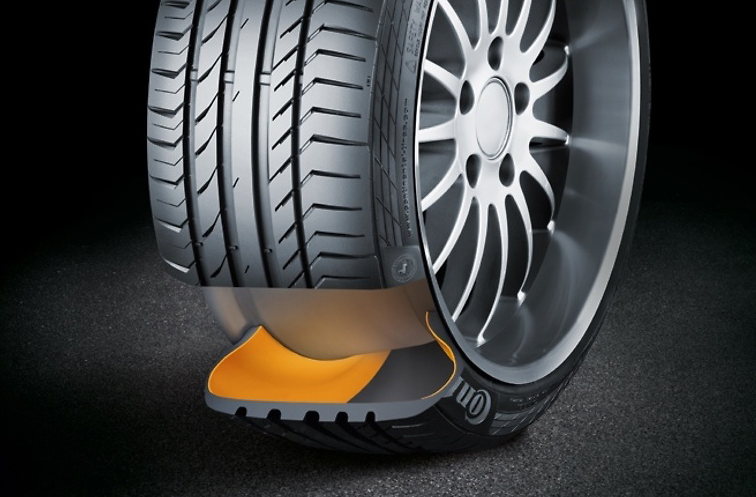 The introduction of self-repairing tires means that the vehicle can (to some extent) move on without the crew having to carry out risky repairs or replacements of a damaged wheel.
The introduction of self-repairing tires means that the vehicle can (to some extent) move on without the crew having to carry out risky repairs or replacements of a damaged wheel.
In the case of our ordinary passenger cars, it is important not so much to ignore tire damage as not to take a spare tire with you. No spare tire means more trunk space, and more trunk space is an added benefit that allows you to better present yourself to the buyer. However, regardless of the reasons, the appearance of self-amalgamating tires on the market is a real automotive revolution.
In order for tires to have minimal wear, you will need to buy a compressor and check the pressure in them regularly. Only if the recommended tire pressure is observed will the tires last longer.
Individual self-healing technology is still so new that only a few major tire manufacturers use it. Moreover, this technology mainly produces tires for premium cars, that is, with a diameter of at least sixteen inches.